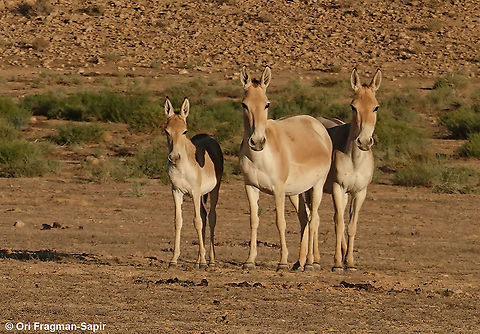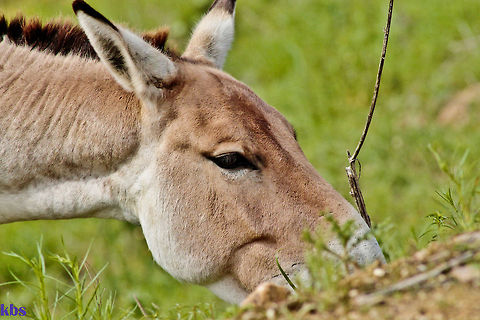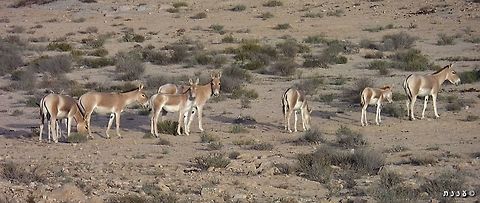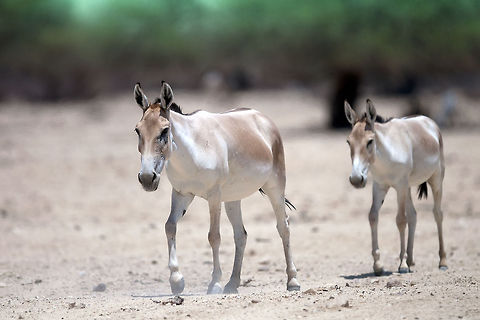
Appearance
Onagers are a little larger than donkeys at about 290 kilograms and 2.1 metres, and are a little more horse-like. They are short-legged compared to horses, and their coloring varies depending on the season. They are generally reddish-brown in color during the summer, becoming yellowish-brown in the winter months. They have a black stripe bordered in white that extends down the middle of the back. They are notoriously untameable.
Naming
The specific name is Ancient Greek ἡμίονος, from ἡμι-, half, and ὄνος, donkey; thus, half-donkey or mule. In Persian the archaic word, "gur" preserves the second syllable of the common Indo-European term that includes ona/ono and ger/gur.⤷ Mongolian wild ass - khulan, "Equus hemionus hemionus"
⤷ Turkmenian kulan, "Equus hemionus kulan"
⤷ Persian onager or gur, "Equus hemionus onager"
⤷ Indian wild ass or "khur", "Equus hemionus khur"
⤷ Syrian wild ass, "Equus hemionus hemippus"

Status
Like many other large grazing animals, the onager's range has contracted greatly under the pressures of hunting and habitat loss, and of the six subspecies, one is extinct and two are endangered. The kiang, a Tibetan relative, was previously considered to be a subspecies of the onager as "E. hemionus kiang", but recent molecular studies indicate that it is a distinct species.
Uses
Equids were used in ancient Sumer to pull wagons circa 2600 BC, and then chariots on the Standard of Ur, circa 2000 BC. Clutton-Brock suggested that these were donkeys rather than onagers on the basis of a "shoulder stripe". However, close examination of the animals on both sides of the piece indicate that what appears to be a stripe may well be a harness, a trapping, or a joint in the inlay.References:
Some text fragments are auto parsed from Wikipedia.